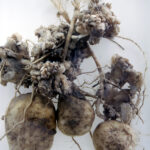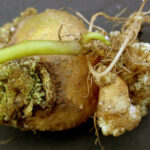Polish name: Rak ziemniaka
English name: Wart / Black Wart Of Potato
Kod EPPO: SYNCEN
Perpetrator of the disease:
- Fungus Synchytrium endobioticum
Gallery
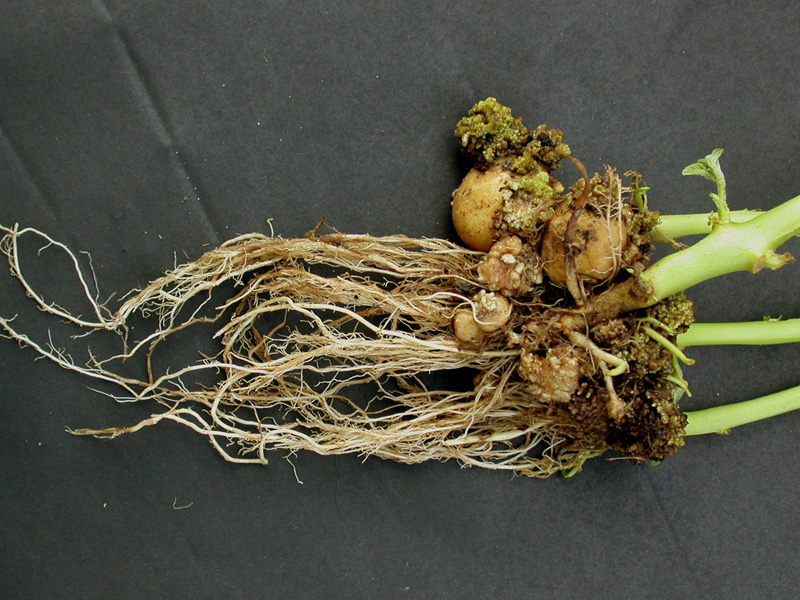
Potato wart disease. Various forms of growths on the tuber.
(photo by T. Pastuszewska)
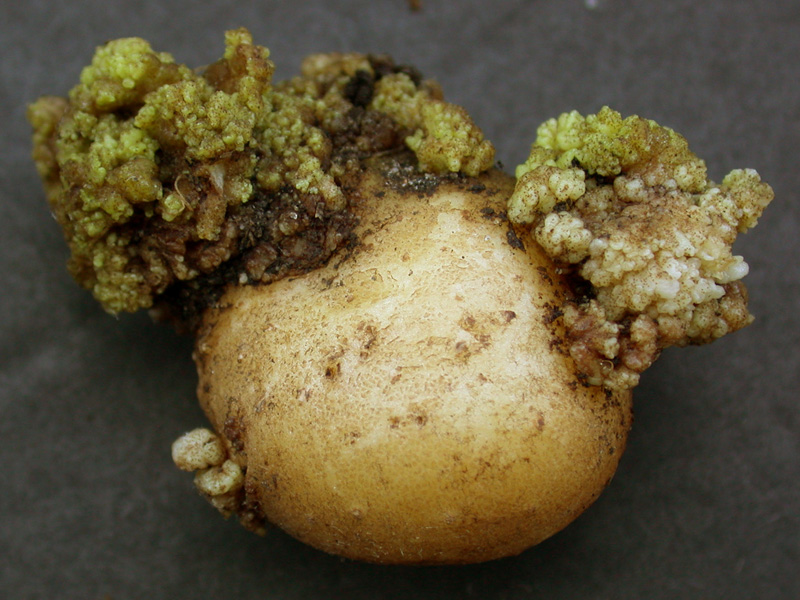
Potato Wart Disease. Various forms of growths on the tuber.
(photo by T. Pastuszewska)
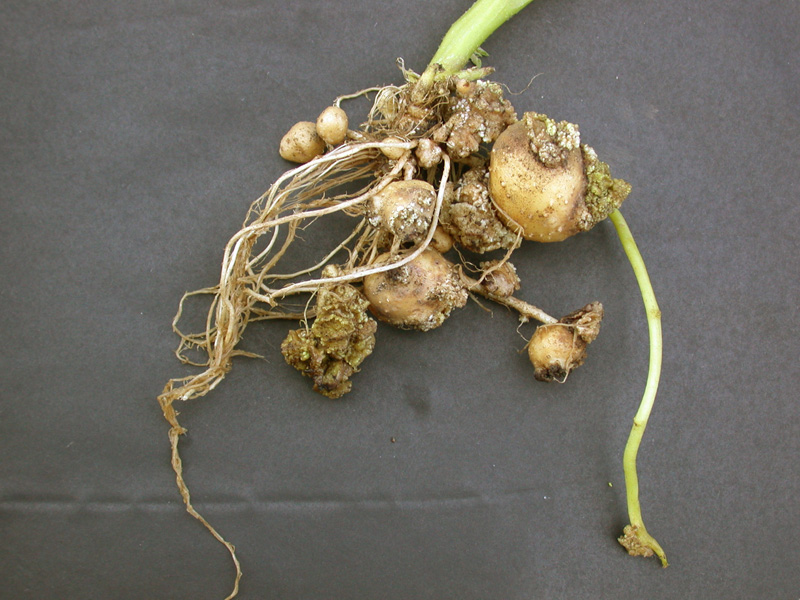
Potato Wart Disease. Various forms of growths on the tuber.
(photo by T. Pastuszewska)
- Rak ziemniaka. Różne formy narośli na bulwie (fot. S. Wróbel)
- Rak ziemniaka. Różne formy narośli na bulwie (fot. T. Pastuszewska)
Characteristics and description of the disease
Potato wart disease occurs in limited areas on all continents, except for Australia. Quarantine measures have restricted the spread of the disease. The development of the wart can lead to minor qualitative changes or result in the complete destruction of the crop. The severity of the disease varies depending on the cultivated variety, pathogen strain, infection level, and weather conditions.
The disease’s perpetrator, the fungus Synchytrium endobioticum, producing resting spores, can survive in the soil for over forty years.
Symptoms of infestation
Symptoms appear on various potato organs, especially on tubers and stolons, less frequently on stems. On tubers, cauliflower-like growths form in the eyes, ranging in color from white to brown, capable of completely distorting the tuber (photo 1A, 1B, 1C, 1D, 1E). On stolons, growths develop on the top meristems, varying in size from a pea to a structure exceeding 10 cm in diameter. Wart symptoms rarely occur on the foliage. Plants may exhibit poor vigor or take on a dark green color. Occasionally, wart-like growths form at the base of stems, and they may appear on the upper part of stems, leaves, or flowers. Growths above the soil surface can range in color from green to brown.
Protection methods
Quarantine measures are most commonly employed in the preventive protection of potatoes against wart disease, especially in areas free from this disease. In regions with contaminated soils, only varieties with major resistance genes, also against various biotypes of the disease-causing agent, are cultivated.
Compiled by: Prof. Dr. Hab. Józefa Kapsa

